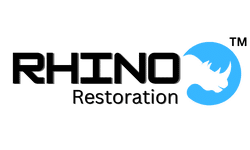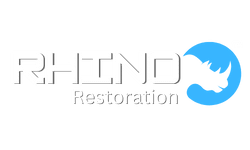Frequently Asked Questions
What is water damage restoration?
Water damage restoration is the process of repairing and restoring a property affected by water intrusion, such as from floods or leaks. This involves assessing the damage, removing excess water, drying affected areas, and addressing any resultant mold growth or structural issues.
Is water restoration covered by insurance?
Water restoration is often covered by insurance, depending on your policy and the cause of the damage. It's essential to check with your insurance provider to understand your coverage and any potential exclusions.
How much does water damage restoration cost?
The cost of water damage restoration varies depending on the extent of the damage, the services needed, and the property involved. On average, it can range from $1,000 to $5,000, but a detailed estimate is best obtained through a professional assessment.
How long does water damage restoration take?
The duration of water damage restoration can vary based on the extent of the damage. Typically, the process can take anywhere from a few days to several weeks to complete, depending on the severity and necessary repairs.
What causes water damage in homes?
Water damage in homes is caused by various factors, including leaks from plumbing, roof damage, flooding, and malfunctioning appliances. These issues can lead to significant structural damage and promote mold growth if not addressed promptly.
How to identify water damage signs?
Identifying water damage signs involves looking for prominent indicators such as unexplained wet patches, discoloration on walls or ceilings, peeling paint, a musty odor, and mold growth. Early detection is crucial for effective remediation.
What steps to take after water damage?
The steps to take after water damage are: First, ensure your safety by turning off electricity and evacuating if necessary. Next, document the damage, contact a professional restoration service like Rhino Restoration, and begin removing excess water and drying the affected area.
Can I perform water restoration myself?
Performing water restoration yourself is possible, but it's often risky and may not be effective. Professional services ensure thorough cleanup, mold prevention, and proper restoration, minimizing future damage and health hazards. It's usually best to seek expert help.
How to choose a restoration company?
Choosing a restoration company involves assessing their experience, certifications, and customer reviews. Look for prompt response times, clear service offerings, and transparency in pricing to ensure reliable and effective restoration solutions for your needs.
Is mold removal included in restoration services?
Mold removal is indeed included in our restoration services. At Rhino Restoration, we specialize in comprehensive mold remediation as part of our disaster recovery offerings to ensure your property is safe and restored effectively.
What equipment is used for water restoration?
The equipment used for water restoration includes industrial-grade dehumidifiers, air movers, moisture meters, and extraction pumps. These tools work together to efficiently remove water, dry affected areas, and restore properties to their original condition.
How to prevent future water damage?
Preventing future water damage involves regular maintenance, such as ensuring proper sealing of windows and doors, clearing gutters, and checking for leaks in plumbing or appliances. Installing sump pumps and using water detection devices can also help mitigate risks.
What to expect during the restoration process?
What to expect during the restoration process includes a thorough assessment of the damage, prompt water removal, drying and dehumidification, mold remediation if necessary, and ongoing communication regarding the timeline and progress of repairs.
How does the insurance claim process work?
The insurance claim process involves notifying your insurance company about the damage, submitting necessary documentation, and receiving an assessment. Once your claim is approved, you'll typically receive compensation to help cover the restoration costs.
Are there health risks associated with water damage?
The health risks associated with water damage include mold growth and structural deterioration, which can lead to respiratory issues, allergies, and other health complications. Prompt remediation is essential to minimize these risks and protect occupants' well-being.
What are common water damage sources?
Common water damage sources include burst pipes, roof leaks, flooding, appliance malfunctions, and poor drainage systems. Identifying these sources promptly can help mitigate extensive damage and lead to effective restoration.
How to safely remove water from a basement?
Safely removing water from a basement involves the following steps: First, turn off all electricity to prevent hazards. Use a submersible pump or wet vacuum to extract the water, then ventilate the area to promote drying and reduce mold growth.
How to dry out water-damaged flooring?
Drying out water-damaged flooring requires immediate action. Start by removing excess water using a wet vacuum, then improve airflow with fans and dehumidifiers. Additionally, lift any affected floorboards and monitor moisture levels to ensure complete drying.
What is the restoration timeline for water damage?
The restoration timeline for water damage varies based on the extent of the damage but typically ranges from a few days to several weeks. Quick response and proper assessment are key to minimizing the duration of the restoration process.
Which materials can be restored after water damage?
Many materials can be restored after water damage, including hardwood and laminate flooring, drywall, insulation, and certain electronics. Quick drying and professional restoration techniques help salvage these items, minimizing loss and restoring your property efficiently.
How can I check for hidden water damage?
Checking for hidden water damage involves inspecting areas like ceilings, walls, and floors for discoloration, peeling paint, or warping. Additionally, listen for dripping sounds, check for musty odors, and monitor your water bills for unusual increases.
What are the consequences of delayed restoration?
The consequences of delayed restoration can be severe. Prolonged exposure to water damage can lead to structural issues, increased mold growth, and health risks, ultimately resulting in more extensive repairs and higher costs.
How does saturation level affect restoration?
Saturation level significantly affects restoration by determining how much moisture is present in materials. Higher saturation levels require more extensive drying processes, as excess moisture can lead to mold growth and structural damage if not addressed promptly.
What should be included in a restoration estimate?
A restoration estimate should include a detailed assessment of the damages, a breakdown of necessary services, material costs, labor expenses, and a timeline for completion. This transparency helps ensure an accurate understanding of the restoration process.
Is emergency water removal available 24/7?
Emergency water removal is available 24/7 at Rhino Restoration. Our dedicated team is always ready to respond quickly to minimize damage and help you regain control of your property, no matter the time of day.
What are customer reviews saying about restoration services?
Customer reviews highlight that restoration services are often praised for their quick response times, professionalism, and effective solutions in addressing water damage and mold issues. Clients appreciate the expertise and care shown throughout the recovery process.
How to handle sewage backup during restoration?
Handling sewage backup during restoration requires immediate action. First, ensure safety by avoiding contact with contaminated water, then call professionals for safe cleanup and thorough sanitization to prevent health risks and property damage.
What insurance factors affect water restoration coverage?
The insurance factors that affect water restoration coverage include the type of policy you have, the cause of the water damage, any exclusions or limitations in your coverage, and the deductible amounts. Understanding these elements can help you navigate your claims process effectively.
Are DIY restoration kits effective for small damages?
DIY restoration kits can be effective for addressing small damages; however, their success largely depends on the extent of the damage and the user's ability to apply the products correctly. For larger issues, professional assistance is often recommended.
What training do restoration professionals have?
Restoration professionals undergo extensive training in various areas, including water damage restoration, mold remediation, and safety procedures. They often complete certifications from recognized organizations, equipping them with the skills necessary to effectively manage disaster recovery projects.




